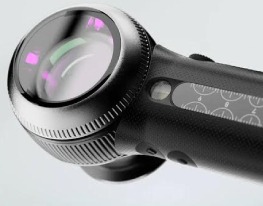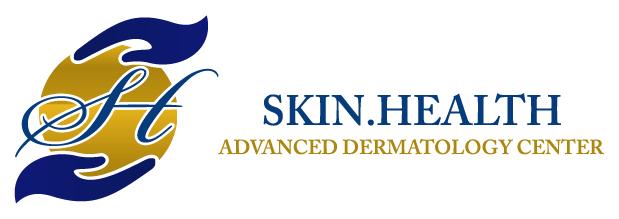About Us

- Women's Dermatology
- Geriatric Dermatology
- Hansen's Disease
- Venereology
- Skin Biopsy
- Targeted Phototherapy
- Cryotherapy
- Treatment of Warts
- Keloids
- Mole Mapping
- Allergy Patch Testing
- Wood's Lamp Examination
- Milia and Molluscum extraction
- Treatment of Corns and Calluses
- Medical Dressings
- Testing for Fungal Infections
- Chamber Phototherapy
Dermatoscopy
Dermatoscopy, also known as skin surface microscopy, is a non-invasive diagnostic tool, most commonly used to examine suspicious moles and pigmented lesions.
It is most popularly used to examine suspicious lesions for clues of skin cancer. This helps Dermatologists as we can now avoid skin biopsies that are not warranted. It also helps Dermatologists to avoid making diagnostic errors and skip performing skin biopsies of lesions that do require a pathologist’s assessment.
A Dermatoscope involves a high quality magnifying lens and powerful lighting system. At Skin.Health, we use the Dermlite DL5 – the most advanced Dermatoscope in the world today, as we speak. This is a hybrid dermatoscope which provides cross-polarized, parallel-polarized as well as non-polarized lighting. It provides multiple magnification options along with 9 polarization and brightness levels. It also provided 365 nm UV (blue) light which makes it easier to diagnose and visualize epidermal pigmentation, vascular lesions and various bacterial and fungal infections of the skin, nail and hair. Various disorders of the scalp like scarring and non-scarring alopecia – can now be diagnosed with higher accuracy using a Dermatoscope – thus reducing the need for scalp biopsies.
Unlike traditional Dermatoscopes, the Dermlite 5 is portable and does not require to be linked or attached to the Doctor’s laptop. This makes it easy to assess difficult to reach areas. Images can be taken by attaching the Dermlite device to the Doctor’s smartphone.
Dermatoscopy has vastly improved Dermatological practice, not only in improving diagnostic accuracy, but also to monitor disease progression and treatment response in an objective manner.
Dermatoscopy is a simple non-invasive out-patient diagnostic procedure. Modern day Dermatoscopy with state-of-the-art equipment is so much more than just skin cancer detection. It has proven to be a game changer in effective visualization and accurate diagnosis of various pigmentary lesions, vascular lesions, infectious conditions; not to mention scalp/ hair and nail diseases. At our practice, it has vastly enhanced Doctor-Patient communication and counselling.

Dermatoscopy, also known as skin surface microscopy, is a non-invasive diagnostic tool, most commonly used to examine suspicious moles and pigmented lesions.
Treating Acne
The treatment of acne is aimed at dissolving the follicular plug, reducing the oil production, killing the P. Acnes bacteria and reducing inflammation. Different creams and antibiotic tablets can help achieve each of the above-mentioned goals. Large black heads and white heads may have to be manually removed by a trained dermatologist under sterile conditions. Retinoid creams are the mainstay of acne therapy.
First-time retinoid users will experience a mild flare-up of acne in the first 1-2 weeks of treatment, but MUST NOT discontinue the medication, as the fresh crop of acne will resolve on continuing the retinoid. Women who are pregnant or eager to conceive MUST always discuss this with their dermatologist, so that your Doctor can accordingly tailor your prescription. Oral antibiotics or Isotretinoin may be prescribed for severe acne. Our facility also offers anti-acne chemical peels for those who are not keen on, or unsuitable for treatment with antibiotics or Isotretinoin. Women with evidence of hormonal disturbances will have to be evaluated and treated by an endocrinologist as well, in order to maximize the efficacy of the anti-acne therapy.
The redness and mild scaling left after a pimple heals may be obvious in the fair-skinned. However it disappears on its own in 1-2 months and does not require any treatment. In darker-skinned individuals, pimples may heal with residual pigmentation. This can be faded by using medicated creams, chemical peels and/or microdermabrasion. Shallow scars and pits may also be treated with microdermabrasion, which can soften the appearance of scars. Moderately deep scars can be remodeled using dermarollers and fractional resurfacing lasers. These methods are highly dependent on practitioner technique and can result in further scarring in untrained hands.
